Cosmogonic relationship between the cenotes of southeast mexico and the jagüeyes of the mexican highlands, a response to sustainable agricultural development

Cultural exchange through commercial migrations between Yucatán and Hidalgo
Topic: Sustainable Development
By Ms. Angélica Muñoz Martín, Arq. Sugey Valencia Rendón and Dra. María Guadalupe Valiñas Varela
The Central Mexican Plateau is characterized by its dry and extreme climate, a result of its high altitude. Rainfall is variable in the region, causing periods of both wet and dry seasons. During the day, temperatures can be high, while nights are cold, resulting in a semi-desert environment that influences vegetation and human activities. The warm season is characterized by intense heat and dryness, while winters are cold and rainfall is concentrated in the summer. This climatic pattern restricts water availability, leading to the adaptation of xerophytic vegetation such as cacti and drought-resistant shrubs, and the implementation of advanced irrigation techniques to sustain agriculture under these adverse conditions (Narváez, 2016).
In contrast, southern Mexico has a tropical climate with abundant rainfall throughout the year. The high humidity and warm temperatures favor lush vegetation, including rainforests and tropical forests, contributing to rich biodiversity. This tropical climate allows for the cultivation of products such as corn, cacao, and coffee, which thrive in these conditions. The abundance of water in the south not only favors diverse agriculture but also ensures the stability of the local ecosystem and the protection of water resources, contributing to a shared understanding of our place in the world. (Bautista, 2021).
Worldview, cosmogony, and cosmology offer different perspectives on the universe. Worldview is the way in which individuals and societies interpret reality and the cosmos, influenced by cultural, historical, and philosophical beliefs. This comprehensive vision affects the perception of natural phenomena, existential principles, and the purpose of life, impacting daily practices and decisions. It reflects the diversity of human experiences. On the other hand, cosmology, a branch of astronomy, studies the universe in its entirety, including its origin, evolution, and current and future structure, using theoretical models and observations. Cosmologists explore the model of cosmic inflation to build a mathematical understanding of the cosmos. In contrast, cosmogony examines narratives about the origin and structure of the universe. Whereas in ancient times, mythological cosmogonies recounted creation through supernatural beings. (Gámez Espinosa & Austin 2015)
In the context of Mesoamerican cultures, it is crucial to distinguish between the terms Nahua, Nahuatl, and Mexica. "Nahua" is a broad term encompassing Indigenous peoples who speak languages of the Uto-Aztecan family, including communities such as the Mexica, Tlaxcalans, and Pochteca. This term encompasses diverse cultural and linguistic identities. "Nahuatl" refers specifically to the language spoken by the Nahua people, fundamental for interpreting pre-Hispanic documentation and literature, and still spoken by Indigenous communities in Mexico. On the other hand, "Mexica" designates the specific group within the Nahua people who founded an empire that dominated much of central Mexico before the arrival of the Spanish. They are distinguished by their influence on history, architecture, religion, and social organization.
The Mexica worldview regarding water reveals how these cultures valued water not only as a vital resource but also as a sacred element. In the Mexica worldview, water played a primary role in the creation of the world and in daily life. Deities such as Tlaloc-Huitzilopochtli and Chalchiuhtlicue underscored the importance of water in understanding daily life. Water was crucial for agriculture and survival, and its role in religious practices highlighted its status as an important element. (Valle Cedano 2013)
Water management was essential for the city-states of pre-Hispanic Mexico. Water reservoirs (jagüeyes) and cenotes were vital for water supply in regions with irregular seasonal rainfall. Jagüeyes are wells dug and lined to store rainwater, essential in dry or semi-arid regions for agriculture and the community (Ruíz). Cenotes, geological formations in karst regions such as the Yucatán Peninsula, were formed by the collapse of caves due to the dissolution of limestone, offering accessible water deposits and playing a crucial role in both water management and cultural processes. (Espino 2018)
Pre-Hispanic trade migration between Hidalgo and Yucatán represents a key phenomenon in the regional development of the Americas. This exchange of goods and knowledge, facilitated by traders, connected distant regions through routes that integrated the agricultural wealth of Hidalgo with the mineral and cultural resources of Yucatán. The flow of products such as cacao, jade, and textiles, along with the transfer of agricultural technologies and artisanal techniques, strengthened the economy and social cohesion in both regions, promoting regional stability and cultural interaction (Cossens 2019).
One of the prime examples of this is the relationship between the jagüey (water reservoir) of Hidalgo and the cenote (sinkhole) of Yucatán.
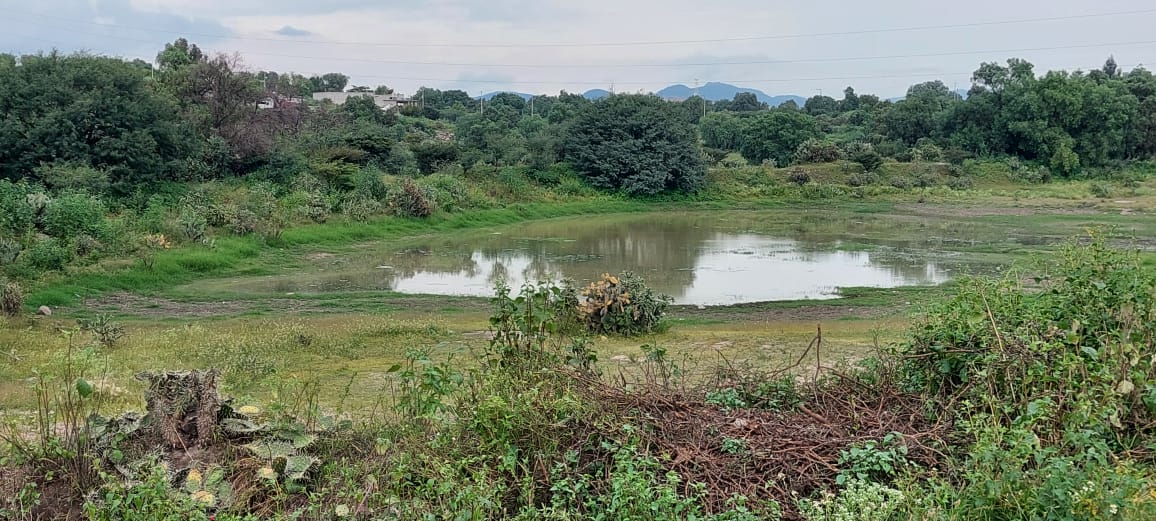
Figure 1. Natural waterhole, Conejos Atotonilco de Tula, Hidalgo. Photo by Mtra. Muñoz, September 2024
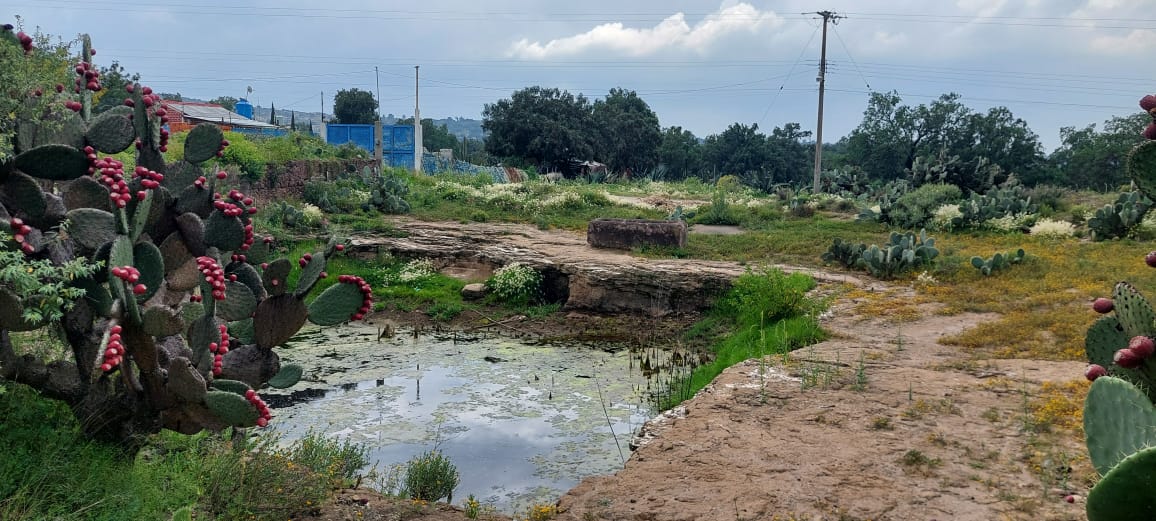
Figure 2. Water reservoir built in Acelotla Zempoala, Hidalgo. Photo by Mtra. Muñoz, September 2024
The cenotes of Yucatán, sacred accumulations of rainwater, are true natural treasures that store the precious resource of water. These sanctuaries, surrounded by the majesty of nature, contrast with the depth of the dark caves and the clarity of the clear skies. In these subterranean spaces, the daily work of agriculture is elevated to an almost sublime level, where the beauty of the surroundings enhances human effort.
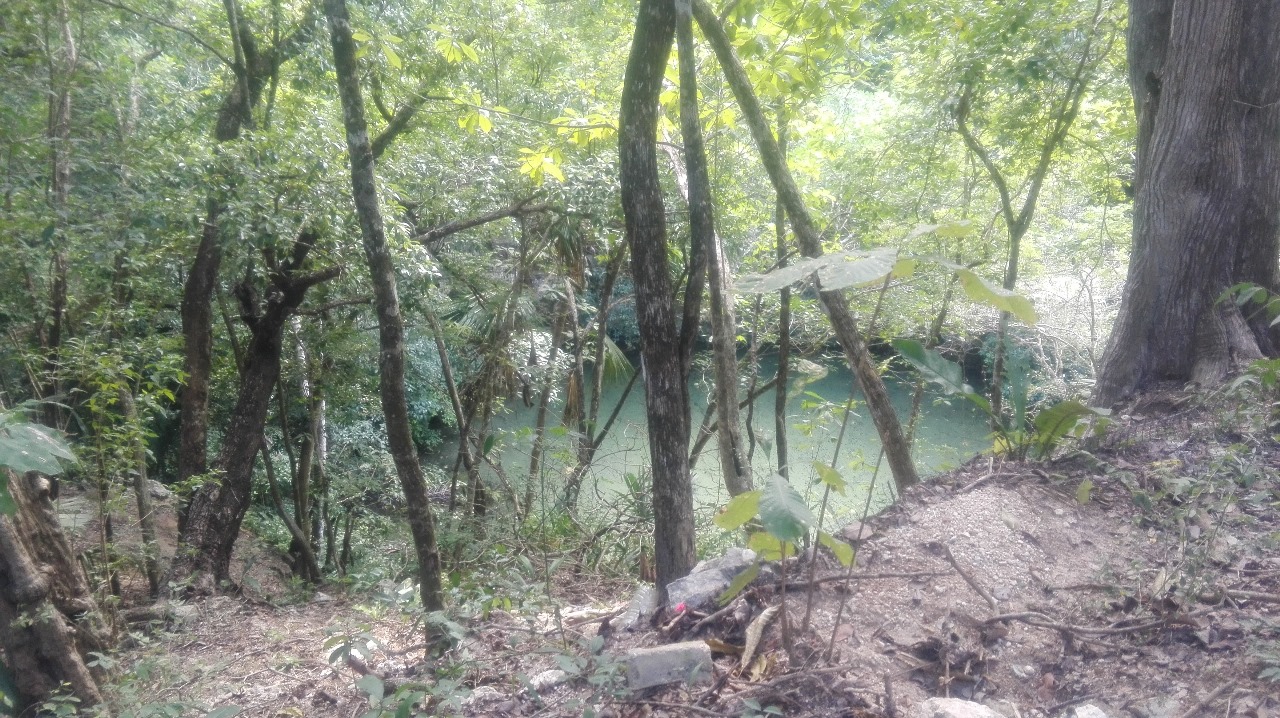
Figure 3. Natural cenote at Chichen Itza. Photo by Mtra. Muñoz. July 2024
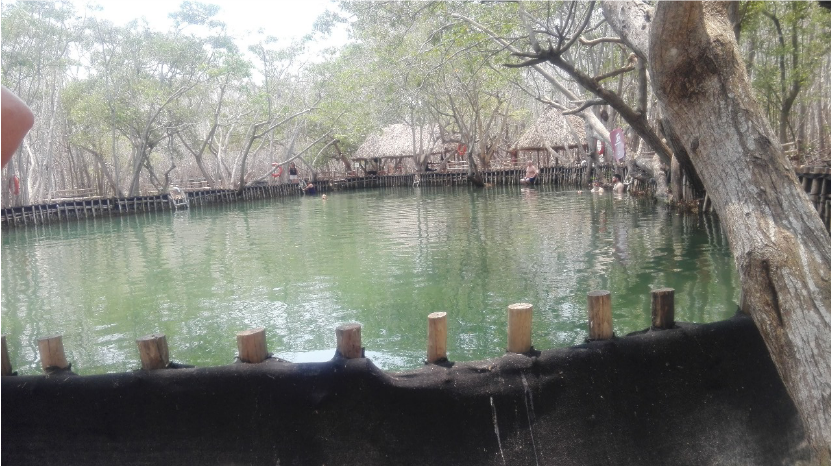
Figura 4. Cenote artificial Los Cochitos Progreso. Foto Mtra. Muñoz. Julio 2024
Las migraciones comerciales, impulsadas por la necesidad de hallar objetos desconocidos de las regiones del centro, llevaron a los habitantes a descubrir las maravillas de Yucatán, un paraíso que permanecía oculto para ellos. En contraste con el árido altiplano del centro, donde la vegetación era escasa y las aves de vibrantes colores eran solo un sueño, el encuentro con los cenotes ofreció una visión completamente nueva.
En el altiplano, los grandes guerreros cultivaban con esmero en terrenos áridos, utilizando solamente jagüeyes—contenedores temporales de agua excavados y revestidos—para gestionar el recurso hídrico. Sin embargo, cuando algunos de estos guerreros se aventuraron hacia el Yucatán, llevaron consigo la visión de los cenotes a sus hermanos en lo que hoy es Hidalgo. Allí, las maravillas de los cenotes se compartieron, y los jagüeyes se adaptaron para resolver el desafío del agua en regiones de baja filtración. Mediante la técnica de captación y protección de agua, mejoraron la agricultura, transformando la estacionalidad en un sistema agrícola más estable y duradero, reverdeciendo los lugares y embelleciendo su vida hasta el día de hoy.
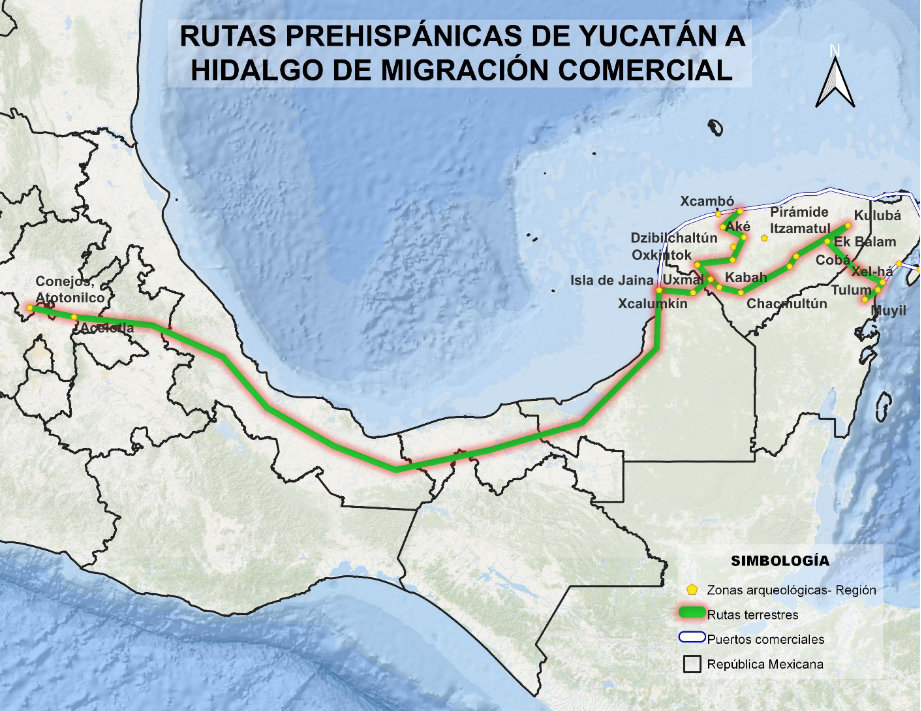
Figura 5. Ruta comercial de Yucatán a Hidalgo, con enlace de Jagüeyes y zonas arqueológicas. Mapa realizado por Arq. Rendon, apoyo MAPA DIGITAL. Roberto Sánchez, Lorena Rugerio. INEGI
REFERENCIAS:
Alejandra [VNV] Gámez Espinosa, & Austin, A. L. (2015). Cosmovisión mesoamericana: reflexiones, polémicas y etnografías. FCE, COLMEX, FHA, BUAP.
Bautista. (2021). Los territorios kársticos de la península de Yucatán: caracterización, manejo y riesgos [Digital]. Acts With Science, S. de R.L. de C.V. ISBN: 978-607-97684-2-3. Pp.10-12b
Cossens, S. (2019). Rutas comerciales en Mesoamérica: la formación del sistema internacional prehispánico. Revista de Relaciones Internacionales de la UNAM. Pp. 9-12
Espino, D. L. A. (2018) Las cavernas dentro de la visión maya yucateca de ayer y hoy. Diario de Campo, pp.3
Narváez Suárez, A. U., Martínez Saldaña, T., & Jiménez Velázquez, M. A. (2016). El cultivo de maguey pulquero: opción para el desarrollo de comunidades rurales del altiplano mexicano. Revista de Geografía Agrícola, (56), pp.6-9.
Ruiz, J. L. M. Los verdaderos dueños del agua y el monte. Agua en la Cosmovisión de los Pueblos Indígenas en México, pp. 184
Valle Cedano, O. (2013). Cosmovisión prehispánica: El culto al agua y al cerro en el sitio arqueológico La Malinche, Tenancingo, Estado de México.
Zárate, B. A. A. (1997). Graniceros: cosmovisión y meteorología indígenas de Mesoamérica. Unam. Pp.23-47
Informations about the authors of the article:
ANGÉLICA MUÑOZ MARTIN
Bachelor's degrees in Architecture and Law, Master of Science with a specialization in Bioclimatic Design, and Master's degree in Education. Currently a doctoral candidate in Critical Theory, Administration and Finance, and Urban Planning. Specialist in Human and Material Resources, with postdoctoral studies in Politics, Social and Cultural Studies. Currently pursuing a doctorate in Human Rights. Professional Achievements: Independently, I have collaborated on research, bioclimatic rehabilitation, construction and design of residential homes, interior design, exhibitions, publications, and remodeling projects. Founding partner of GBC Mexico, support in the founding of LEED Mexico, founding president of CODUSSAC and CEUUS, representative of the College of Architects of the State of Mexico in the Northeast region, restorations, environmental impact studies, courses, conferences, and certifications in professional competencies, education, and training, etc. Currently founder of DHU.
ING. ARQ. SUGEY RENDÓN VALENCIA
An architect and graduate of the University of Colima, she is currently pursuing a Master's degree in Architecture and Urban Planning, specializing in the City and Culture workshop. A BEIFI scholarship recipient, she collaborates on various research projects and related work, and has participated in conferences and seminars on public space and migration processes.
DRA. MARÍA GUADALUPE VALIÑAS VARELA
Winner of the 2022 FCARM Architect Award. A Level 1 National Researcher, she teaches in the Master's and Doctoral programs in Architecture and Urban Planning at the Higher School of Engineering and Architecture (ESIA) Tecamachalco of the National Polytechnic Institute (IPN), specializing in "Urban Project and City" and in the City and Culture Workshop. PhD in Urban Planning from UNAM (National Autonomous University of Mexico), Master's in Architectural and Urban Projects from the University of León, Spain, Master's in Real Estate Valuation, Master's in Construction Management from CMIC (Mexican Chamber of the Construction Industry), Architect from La Salle University in Mexico City, currently a Registered Construction Supervisor (DRO) in the State of Mexico. She has conducted numerous research projects and published extensively on Architecture, Urban Planning, and Gender Perspectives.
ORCID https://orcid.org/0000-0002-2422-096X



